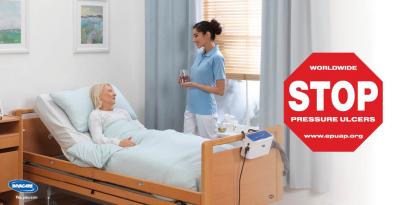Stop Pressure Ulcer Day is an event that takes place every year in which industry, healthcare professionals and the public come together to help raise awareness of pressure ulcers. This event is designed to highlight the resources available to help prevent pressure ulcers.
What is a pressure ulcer?
A pressure ulcer or also known as a ‘pressure sore’ is an area of damage to the skin and the underlying tissue, usually over a bony area of the body. This is caused by pressure, or pressure in combination with shear. Generally, you can find pressure ulcers on the back of the body, the buttocks, the hips, and the heels but they can also form on any bony area. The severity of the sores can range from open wounds to skin discoloration.
![]()
Who is at risk?
Anyone who is sitting or lying down for a long period of time can be at risk of developing pressure ulcers. The below are factors that can increase your risk.
• People who have difficulty moving or repositioning themselves
• Those who have limited bladder or bowel control
• People who are seriously ill or have had surgery
• Those with a poor diet and low fluid intake
• Those who smoke
• Those with previous pressure ulcers/skin damage
• People with poor circulation
How to prevent pressure ulcers
Pressure ulcers are costly and mostly avoidable. There are several preventative measures that can be put in place to help reduce the risk of developing a pressure ulcer:
• Check the skin daily for signs of damage or discoloration
• Keep moving. It’s important to turn and change position regularly.
• Repositioning: If a using a wheelchair, it’s important to move every 15-30 minutes. This can be done by moving rolling side to side.
• Ensure to use suitable support surfaces which include mattresses, heel care and seating.
• Good nutrition
• Protect the skin by keeping it clean and dry. Wash the skin with gentle soap and quickly pat dry.
Video Reference: www.epuap.org
To find out more about pressure ulcer prevention and treatment, download our guideA guide to preventing pressure ulcers . We have also created a dedicated REST microsite to help support healthcare professionals, carers and support workers. This website is jam packed with useful resources such as clinical papers, guidelines and helpful posters.




